Django Unchained Review
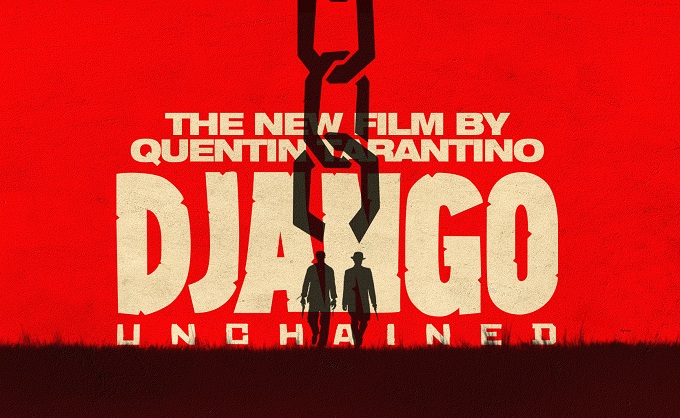
The Plot:
After a bounty hunter recruits a slave called Django to help track down his latest payday the two become unlikely friends and partners. Together the pair set out to free Django’s wife Broomhilda from the clutches of a ruthless and sadistic Mississippi plantation owner.
The Good:
Quentin Tarantino reached new heights of blood soaked brilliance with Inglorious Basterds, his invigorating take on World War 2 and the pleasures of Nazi killing. With Django Unchained the infamous director once again takes a delightful revisionist approach to history, this time to the well-known evils of slavery. The result is an original deeply satisfying reinvigoration of the Western genre packed with bullets, style and substance.
Amongst all the bloody vengeance and tension, Tarantino even manages to inject some welcome humour. It’s a trait clearly borrowed from the winning formula of the classic ‘Spaghetti Westerns’; taking the sting out of so much human death and misery with clever black comedy and occasional absurdity. An excellent example of this in Django Unchained is a scene in which a bickering group of Ku Klux Klan members ineptly attempt to plan a midnight raid. Tarantino’s script is exquisitely crafted and precisely balanced.
Christoph Waltz won a well-deserved Oscar for his dangerously charismatic performance as a Nazi ‘Jew hunter’ in Inglorious Basterds, this time in his role as a good natured bounty hunter sparkles with the exactly the same magnificence. Flashing between wry humour and fierce tension Waltz is consistently brilliant and a strong contender for another academy award.
Jamie Foxx is a likewise a perfect fit for Django, playing him like a cunning combination of Shaft and Clint Eastwood. Without him the film would surely have struggled to maintain its flawless bravado and would have been a far less credible adventure.
Leonardo DiCaprio has great fun playing against type as the decadently depraved and sadistic plantation boss Calvin Candie. He clearly relishes the opportunity to play with a malevolent southern drawl and human skulls. Samuel L. Jackson is another stellar addition to Django’s impressive acting arsenal, playing Candie’s viciously shrewd right hand man.
Django’s soundtrack is another equally powerful presence in the film. Music has always been Tarantino’s secret weapon, consistently elevating scenes to iconic moments of unquestionable cool. Typically Tarantino has captured this magic by cannibalising classic film scores and resurrecting long forgotten favourite songs. This time he adds original recordings to the mix and produces a devastatingly effective fusion of iconic western sounds and hip hop. It’s a unique musical mash up that epitomises the film’s swaggering charms.
The Bad:
Before Django Unchained even had a trailer it had vocal critics. Fellow filmmakers like Spike Lee voiced angry concerns that turning the horrors of slavery into the backdrop of a flamboyant western would unavoidably be disrespectful and perhaps even outright offensive. Presumably it was suspected that Tarantino’s trademark focus on one liners and style might prevent him doing justice to such serious historical subject matter.
Though Tarantino’s script is predictably loaded with frequent use of the inflammatory N-word, it never fails to powerfully remind audiences just how horrific human slavery is. It’s the right and responsibility of filmmakers to attack evil by ridiculing its absurdities, exposing its wrongs and symbolically righting them through powerful heroic figures. That’s exactly what Django Unchained does.
Squeamish fans may be a little hesitant about rushing to see Django because of Tarantino’s reputation for blood soaked violence. The Kill Bill films in particular were a messy orgy of death, dismemberment and gruesome eye gouging. Although there may be plenty of gushing blood in Django when the bullets start flying, in reality the quick bursts of action are too frantic for any lingering gruesomeness. The film’s violence is mostly too fast and cartoonish to spoil an entertaining ride, even for more sensitive souls.
The Ugly Truth:
Django Unchained is a bloody brilliant masterpiece that shoots fresh life into the Western genre. A smoothly crafted script, a killer soundtrack and a near perfect cast makes this film easily one of Tarantino’s most satisfying and original efforts.
Check out Interviews below from the red carpet at the London premiere:
Jack Reacher Review
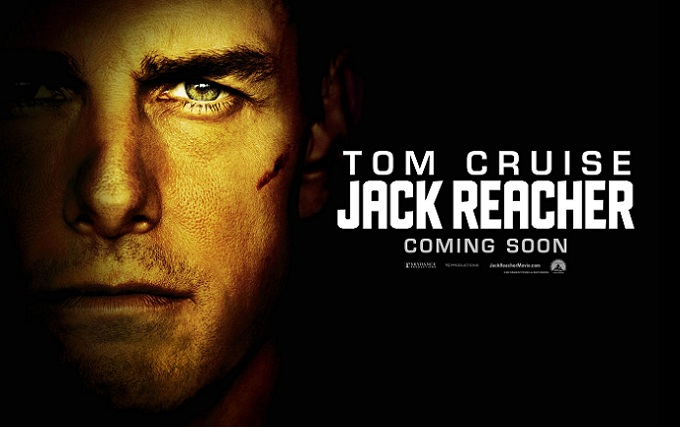
The Plot:
In a fabulously fun take on Lee Child’s novel One Shot, Tom Cruise plays a hardened former military investigator Jack Reacher. When an ex-soldier shoots five innocent civilians in broad daylight, Reacher returns to the US to make sure the man responsible is brought to justice. However all is not as it seems…
The Good:
Whether you are a fan of the book or not, the brilliance of this film is that it doesn’t take itself too seriously, and that it doesn’t patronize its audience. The humour in this film is well placed and mixed in well with all the elements that make it a great action movie.
Tom Cruise makes an excellent Jack Reacher. His delivery of the lines are as dry as a desert and this creates maximum effect as the audience pinch themselves throughout asking “is this guy for real?” He fits the bill physically, despite the fact the character was supposed to be a musclebound 6ft5 in the books. His height really doesn’t seem an issue on screen and his broody loneliness and dis-engagement with the real world is apparent and clear. There is also the odd feeling of vulnerability for this vigilante which brings out a human side to the character making him far from indestructible, and in some instances, refreshingly out of his depth and control.
Rosamund Pike is an interesting choice for Helen Rodin, the DA’s daughter and lawyer who hires Reacher to be her private investigator in this case. Her take on the American accent is somewhat distracting at times, but she provides a good sparring partner for Cruise, with a calm versus the storm factor, and the undertones of a romantic involvement which are danced around but never fully played out.
Robert Duvall however, only features in the second half of the film, but brings in an old school heroism feel to the film, that he is simply magnetic in presence and hilarious in delivery. The moment he appears as gun range owner Cash, he gels instantly with Cruise and you feel taken back to Days of Thunder, you can tell they have great chemistry on screen and have remained friends off.
Another surprising casting is Werner Herzog as The Zec. If you were to paint a picture of an action hero nemesis, he would be it, blind in one eye, living in the shadows and thumbless after having to bite it off himself in order to stay alive. He is almost cartoon like in appearance, and the moment he delivers the line “I was born in Siberia…” you know not to take this film too seriously if you hadn’t figured this out before.
The film mixes the serious and the absurd brilliantly. After a tense opening ten minutes that sets the scene effectively, the film introduces the heroic figure of Jack Reacher in a playful and inventive way. It’s pure brilliance and injects a sudden sense of fun that continues throughout the rest of the film. Slap stick fights with hapless henchmen provide easy laugh out loud buffoonery. The film peaks with an all-out action packed car, gun, fist fighting final scene. It’s so outlandish you really are taken back to the classic Van Damme, Schwarzenneger films of days gone by, a fitting end to the film.
The Bad:
It’s difficult to fault Jack Reacher other than to simply acknowledge that the film doesn’t take itself seriously and audiences could be disappointed if they’re specifically looking for a gritty hard hitting drama. Jack Reacher certainly hit’s hard but only for laughs.
The Ugly Truth:
For all its ridiculousness, Jack Reacher has a knowingly silly stroke of brilliance about it, which makes all its absurdities forgivable. Jack Reacher is a very watchable action romp and fans of the original books won’t be disappointed. Action loving boys will love it and maybe girls will swoon at Tom Cruise in this new action role. The film hits cinemas on the 21st December.
Les Misérables Review
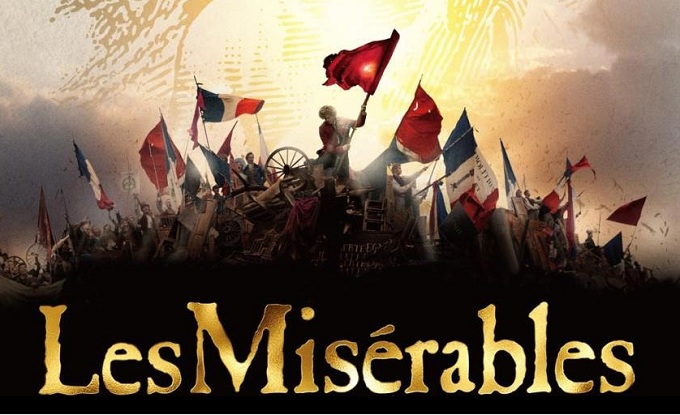
The Plot:
The all singing story follows prisoner 24601 aka Jean Valjean (Hugh Jackman) ,imprisoned for stealing some bread for his sister, as he breaks parole and becomes a better man thanks to the compassion of a priest and a promise to young mother Fantine (Anne Hathaway) as she lays on her deathbed. The only problem being that persistent and law obsessive Javert is on a manhunt and nothing will stop him bringing this convict to justice.
The Good:
Les Misérables is the longest running musical in history and its success is a testament to the story and the incredible musical numbers that expertly guide the audience through this complex tale. Tom Hooper has embraced this and done a valiant job in making it more widely available through the silver screen. Although it’s difficult for some of the wonders of the theatre production to have the same impact on screen, it’s certainly interesting to see an ambitious an surprising translation.
By far the standout performance is from Anne Hathaway, in fact her portrayal as Fantine is Oscar worthy. She managed to reduce an audience to a quivering wreck throughout I Dreamed a Dream. The raw desperation in her performance will move even the biggest sceptic. Even dedicated fans of the stage show will never have seen a performance quite like this and we challenge anyone to not shed a tear throughout this song. The power that Hathaway possesses is also enhanced by intimate close up camera work.
Hugh Jackman is incredibly competent as Jean Valjean, he guides the audience with ease, and delivers some impressive vocals. Out of Hollywood’s hot pickings, there is none more suitable than Jackson who, we must not forget has his roots firmly planted in Musical Theatre.
Baby faced Eddie Redmayne is also a pleasant surprise, demonstrating that his choir boy days at Eton have served him well. He embodies Marius with ease and sends an exemplary chill down the spines of the audience throughout Empty Chairs at Empty Tables. West End star Samantha Barks also shines as Eponine. Who would have thought that a spot on BBC’s I’d Do Anything would have seen her just a few short years later be part of a major Hollywood film.
Helena Bonham Carter and Sacha Baron Cohen delight as Monsieur and Madame Thenadier, and provide the light relief necessary throughout the film. Cohen is particularly standout with his ad-hoc one liners and surprisingly good singing voice. However the film’s biggest surprise has to be Russell Crowe. Huge skepticism surrounded his casting as Javert, however, although clunky at times, he delivers an impressive performance.
The Bad:
Overall this film rests, as it should, on the ability of its cast members, but Director Tom Hooper brings to life a convincing 19th Century France. Some of the settings, particularly the rounding up of revolutionaries (shot in Greenwich) is visually spectacular, and you feel the excitement building for the big barracade showdown. However, when this climatic spectacle finally arrives, it’s slightly underwhelming. The enclosed streets look to much like part of a set, detracting from the marvel of the scene. It’s is a shame, because fans who are very familiar with the stage production will be particularly observant in these key moments.
Hoopers’ camera angles at times are also interesting. He mixes some of the most simple shots with elaborate showboating. Ironically, it is the more simplistic work, which demonstrates his talent more effectively. It’s at least interesting to see what works better on stage and on screen. The magic of the theatre is about pushing peoples imagination, and scenes like the sewer are not as impactful in the film version. On the flipside, the visual portrayals in Master of the House really help elevate the song and the comedic element to the scene.
The Ugly Truth:
Overall this is a strong attempt at bringing the world’s most beloved musical theatre experience to a cinematic audience. The film does have faults, but they are in no way damning to this pleasing production. Nobody has brought this musical version of the Victor Hugo novel to the cinema successfully before, but Tom Hooper has done an excellent job aided by a gifted and well chosen cast. Although think there are many strong contenders for best picture at the Oscars this year, Les Misérables should be a regular fixture at next year’s awards ceremonies.
The Hobbit An Unexpected Journey Review
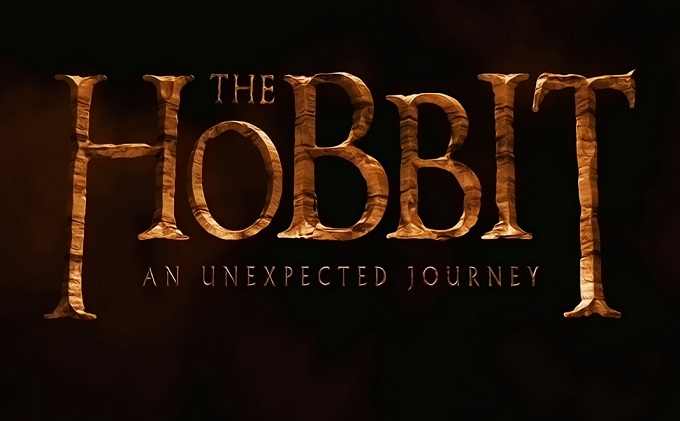
The Plot:
When the wizard Gandalf invites unassuming Hobbit Bilbo Baggins to join a brave band of Dwarfs on a quest to reclaim their homeland from the monstrous dragon Smaug; he finds it impossible to decline and sets out on an unexpected journey to face the magical perils of middle earth.
The Good:
J.R.R. Tolkien’s Lord of the Rings precursor The Hobbit is probably the most widely read and beloved fantasy book ever written. The incredible success of the previous Middle Earth films made it inevitable that The Hobbit would eventually make the predictable journey to the big screen. Now Director Peter Jackson has finally delivered a superb adaptation that should delight new and old fans alike.
Sherlock star Martin Freeman was an obvious and well-chosen choice to play mild-mannered Hobbit hero Bilbo Baggins. His trademark ability to play a flustered everyman is vital in keeping Bilbo endearing. It allows him to be appropriately confused, irritated and astounded by the fantastical world around him. He may be consistently out of his element, but Freeman’s Bilbo thankfully isn’t a buffoon.
The band of Dwarf warriors that Bilbo joins may be numerous, with confusingly similar names, but each has his own well defined personality and charms. This is thanks in part to a well picked group of seasoned character actors and the astonishingly work of skilled hair, makeup and wardrobe departments. Ken Stott as weary old warrior Balin and James Nesbitt as the jovial Bofur are particularly memorable and enjoyable performances. But the real star is Richard Armitage as the heroic dwarf leader Thorin. He epitomises Tolkien’s vision of the dwarves as fierce and proud warriors in spite of their slightly diminutive size.
Of course it is also very welcome to see Sir Ian McKellen reprise his role as powerful wizard Gandalf the Grey. It’s always a joy to see one of the most iconic characters in Tolkien’s world captured so perfectly on screen. His booming voice and clam wry smile allow us to enjoy even the most perilous moments and gives the franchise the same kind of good natured spirituality that Yoda brought to Star Wars.
The most magical assets of Tolkien’s tales have always been the rich array of monsters and mythical creatures that roam his Middle Earth. Goblins, Orcs, Elves, Trolls and Dragons may be generic staples of the fantasy genre, but rarely have they been so beautifully imagined in words than in Tolkien’s book or on screen by Jackson’s Weta Workshop special effects team. Building on the ground-breaking techniques developed while making Lord of the Rings and guided by Guillermo Del Toro who was heavily involved in the film’s pre-production, The Hobbit boasts a dazzling array of imagery equally beautiful and grotesque.
The Bad:
Those lacking in patience or an appetite for fantasy adventure may find 2hours and 40 minutes a long time to follow Bilbo’s adventures; even if it is shorter than any of Peter Jackson’s previous Lord of the Rings adaptations. An Unexpected Journey follows a similar pattern to the first Lord of The Rings film The Fellowship Of the Ring, beginning in the idyllic and uneventful Shire and taking some time to pick up the pace with actual adventure. The film moves with more urgency and excitement as it goes on but it does test audiences stamina.
Those that by choice or accident do see the film in its High Frame Rate 3D format may find takes some getting used to and offers at best minimal improvement. The Hobbit is the first major cinematic release to be released using 48 Frames per second, rather than the traditional 24 frames. This controversial new style of cinema has already divided opinions intensely and will certainly continue to do so. Much like Avatar’s introduction of a new 3D format, it’s impossible to entirely separate your feelings film overall from your opinion of its unique look and feel. However, it is important to remember the film is also being released in standard 3D and 2D formats, so there’s no need to panic if you’re reluctant to give it a go.
The Ugly Truth:
For fans of Tolkien and Peter Jackson’s Lord of The Rings films, the long awaited return to Middle Earth will not disappoint. The Hobbit translate easily to the screen, matching and at times surpassing both the astonishing effects and scope of storytelling delivered by the previous Tolkien adaptations. Ignoring the obvious debate about the film’s optional new 48 frames per second format, the film is otherwise a magnificent first step that will leave most audiences eager to continue the journey in the next two films.
Life Of Pi Review
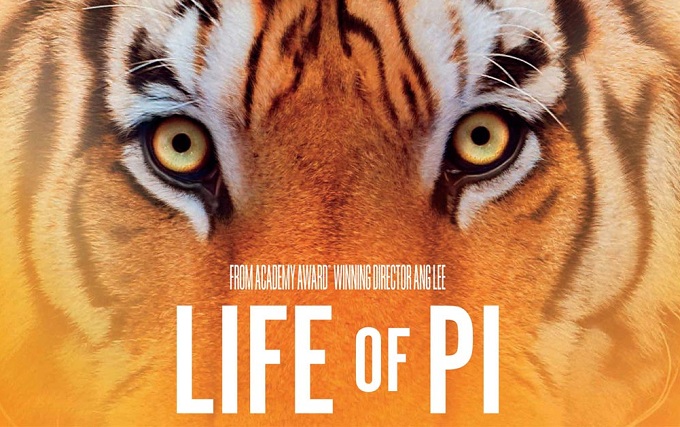
The Plot:
A young man who survives a disaster at sea is hurtled into an epic journey of adventure and discovery. While cast away, he forms an unexpected connection with another survivor … a fearsome Bengal tiger.
The Good:
If you had ever had any doubts about the use of 3D, cast them aside now. Life of Pi provides one hell of a journey, appreciated ten times more through the amazing depth that 3D can provide. Move over Avatar and James Cameron, Ang Lee may truly be the master here as he combines glorious colour with exceptional innovation in this area. Life of Pi has to be up there as one of the major contenders for Best Picture at next years Oscars.
If you’ve read the book, hopefully you wont be disappointed, and if you haven’t read the book, after watching this film you may just want to pick it up and give it a whirl. Life of Pi is a heart-warming tale of religion, belief, tragedy and determination. It is anchored by the exceptionally talented newcomer Suraj Sharma who plays Pi, and it’s his one man show that will keep audiences captivated for just over two hours. There are brilliant levels of humour, surprise and emotion throughout the whole of this film which will keep you on the edge of your seat throughout and as emotionally and physically drained as the lead actor by the end.
Ang Lee, takes something which was once deemed unfilmable and uses his incredible skill as a director to strike a balance within his visual storytelling to allow the audience to be completely captivated with the story that is told and to fully believe that this really could happen. One of the clever things Lee also manages to do, is cast relative unknowns.
At one stage Tobey Maguire was attached to the film, but replacing him with Rafe Spall was a good strategic move as it does not distract the audience because of who he is, and allows the character of “writer” to remain ambiguous to some extent as a secondary character to the story. The real focus must be the teenage Pi. Even Irrfan Patel as the adult Pi is secondary character for two thirds of the film, but comes into his own in the last part of the film to really tug on the heart strings of the audience – be prepared to shed a tear or two!
The Bad:
Some may be dubious about the use of CGI in this film, but fear not, this issue becomes a mere flicker in your mind at the beginning and you quickly fall into the trance of the action taking place in front of you, and the CGI becomes nothing but a fully working and authentic zebra, chimpanzee or Bengal tiger. Every detail on each animal is so precise that it’s hard to separate what is real or fake, if any. What you also remember here is that Suraj Sharma is essentially acting with a tennis ball on a stick for the majority of this film, and you begin to really appreciate the clever choice that Ang Lee has made in casting him.
How he feels that level of emotion and connection to these animals who were never really there must take years of acting training to even come close, yet Sharma manages it effortlessly and is utterly captivating. Another testament to this brilliant casting is in the final few scenes, where Pi recollects his experience, and in one medium close-up shot you watch him tell the story once more and the emotion radiates from him brilliantly.
The Ugly Truth:
This film is a must see at the cinema. Whether you are a fan of the book or not, Life of Pi is truly a spectacle of cinematic brilliance. It brings the captivation and intrigue of films like Slumdog Millionaire, tugs on your heart strings like Bambi, and is probably one of Ang Lee’s most ambitious and strongest films to date.
Life of Pi opens in cinemas on the 20th December. Check out Interviews below with Ang Lee, Rafe Spall and Suraj Sharma from the red carpet at the London Premiere: